
Usakos: A Hidden Gem in Namibia's Heartland
Discover Usakos, a charming town in Namibia, where history, nature, and adventure converge to create an unforgettable experience.
Usakos, a quaint town nestled in the heart of Namibia, is a treasure trove of history and natural beauty. Founded during the German colonial era, Usakos boasts well-preserved architecture that offers a glimpse into its storied past. Wander through its streets and admire the charming old buildings that whisper tales of bygone days. The town is surrounded by stunning landscapes that beckon nature enthusiasts and adventure seekers alike. Explore the nearby Erongo Mountains, where ancient rock art and scenic hiking trails await. For a more leisurely experience, visit the picturesque Khan River, perfect for a serene picnic or a spot of birdwatching. Usakos is also a gateway to some of Namibia's most iconic attractions. The famous Spitzkoppe, often referred to as the 'Matterhorn of Namibia,' is just a short drive away. This majestic granite peak is a haven for climbers and photographers, offering unparalleled views and a sense of tranquility. Whether you're a history buff, a nature lover, or simply in search of a peaceful retreat, Usakos has something to offer. Its warm, welcoming community will make you feel right at home, ensuring that your visit is both memorable and enriching.
Local tips in Usakos
- Visit during the cooler months (May to September) for the best weather conditions.
- Carry cash, as not all establishments accept credit cards.
- Hire a local guide to explore the Erongo Mountains and learn about the ancient rock art.
- Pack sunscreen and a hat, as the Namibian sun can be intense.
- Try local delicacies at the town's eateries for an authentic Namibian culinary experience.
- Book accommodation in advance, especially if you plan to visit popular nearby attractions like Spitzkoppe.
Usakos: A Hidden Gem in Namibia's Heartland
Usakos, a quaint town nestled in the heart of Namibia, is a treasure trove of history and natural beauty. Founded during the German colonial era, Usakos boasts well-preserved architecture that offers a glimpse into its storied past. Wander through its streets and admire the charming old buildings that whisper tales of bygone days. The town is surrounded by stunning landscapes that beckon nature enthusiasts and adventure seekers alike. Explore the nearby Erongo Mountains, where ancient rock art and scenic hiking trails await. For a more leisurely experience, visit the picturesque Khan River, perfect for a serene picnic or a spot of birdwatching. Usakos is also a gateway to some of Namibia's most iconic attractions. The famous Spitzkoppe, often referred to as the 'Matterhorn of Namibia,' is just a short drive away. This majestic granite peak is a haven for climbers and photographers, offering unparalleled views and a sense of tranquility. Whether you're a history buff, a nature lover, or simply in search of a peaceful retreat, Usakos has something to offer. Its warm, welcoming community will make you feel right at home, ensuring that your visit is both memorable and enriching.
When is the best time to go to Usakos?
Iconic landmarks you can’t miss
Deadvlei
Explore the surreal beauty of Deadvlei in Namibia's Namib Desert, where ancient trees meet stunning red dunes and a dazzling white clay pan.

National Marine Aquarium
Explore the vibrant marine life at the National Marine Aquarium in Swakopmund, a captivating tourist attraction showcasing oceanic wonders and conservation.

Okaukuejo Etosha
Experience the breathtaking wildlife and stunning landscapes of Okaukuejo in Etosha National Park, a must-visit destination for every traveler.
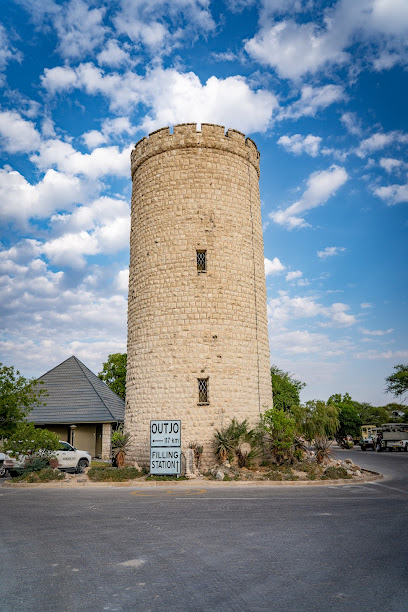
Petrified Forest
Explore the breathtaking beauty of the Petrified Forest, where ancient trees turned to stone create a captivating landscape in Namibia.

Ai Aiba - The Rock Painting Lodge
Experience the beauty of Namibia at Ai Aiba - The Rock Painting Lodge, where rich history meets stunning landscapes for an unforgettable stay.

Skeleton Coast National Park
Explore Skeleton Coast National Park, where breathtaking landscapes and rich wildlife meet the haunting beauty of Namibia's coastline.

Duwisib Castle
Discover the enchanting Duwisib Castle in Namibia, a Gothic masterpiece surrounded by stunning landscapes and rich history, perfect for every traveler.

Erongo Rocks - Farmhouse & Camping
Experience the beauty of Erongo Rocks - a perfect camping destination in Namibia for nature lovers, hikers, and birdwatching enthusiasts.

Kudu Statue
Explore the Kudu Statue in Windhoek, a stunning tribute to Namibia's wildlife and cultural heritage, surrounded by vibrant local life and history.
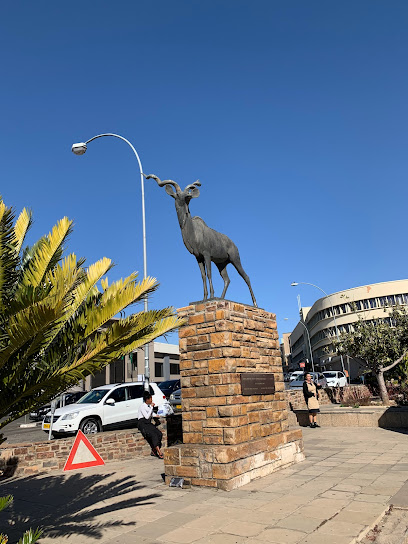
Etusis Lodge
Discover serenity amidst breathtaking landscapes at Etusis Lodge in Namibia's stunning Etusis Nature Reserve.

San Living Museum
Discover the captivating culture of the San people at the San Living Museum, a unique destination showcasing rich heritage and traditional practices.

Spreetshoogte Pass
Experience the breathtaking beauty of Spreetshoogte Pass, a stunning mountain pass offering panoramic views of the Namib Desert's vast landscapes.

Erongo Mountain Winery
Explore the exquisite flavors of Namibia at Erongo Mountain Winery, nestled in the stunning landscapes near Omaruru.
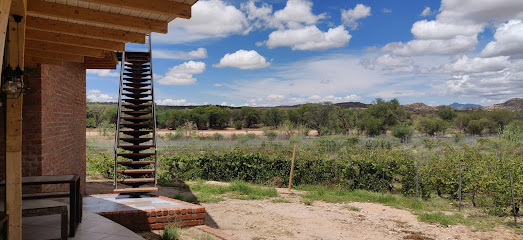
Eco-Gliding Tours
Discover the thrill of Eco-Gliding Tours in Swakopmund, where adventure meets breathtaking landscapes in Namibia's stunning coastal region.

Tikoloshe Afrika
Explore Tikoloshe Afrika in Omaruru, where local craftsmanship and vibrant artistry come together to celebrate Namibia's rich cultural heritage.

Unmissable attractions to see
Spitzkoppe
Discover the breathtaking beauty of Spitzkoppe, Namibia's iconic mountain peak, and explore its stunning landscapes and rich cultural heritage.

The Bridge
Experience the breathtaking beauty of The Bridge in Namibia, a natural wonder that showcases the stunning landscapes and geological marvels of the region.

Sand Rock
Explore the breathtaking beauty of Sand Rock in Namibia, where stunning rock formations meet serene landscapes for an unforgettable experience.

Boma campsite
Discover the beauty of Namibia at Boma Campsite, where adventure meets tranquility in the heart of nature.

Essential places to dine
Joe's Beerhouse
Discover authentic Namibian cuisine and vibrant atmosphere at Joe's Beerhouse in Windhoek - a culinary gem that celebrates local culture.

The Tug Restaurant
Experience exquisite dining on the beach at The Tug Restaurant in Swakopmund – where fresh seafood meets breathtaking ocean views.

Swakopmund Brauhaus
Experience authentic German cuisine and locally brewed beers at Swakopmund Brauhaus - a must-visit culinary destination in Namibia.

Altstadt Restaurant
Experience authentic German cuisine and fresh seafood in Swakopmund's Altstadt Restaurant – where every meal is a celebration of local flavors.

Jetty 1905 Restaurant
Discover exceptional seafood dining at Jetty 1905 Restaurant in Swakopmund - where ocean views meet culinary excellence.

Fork 'n Nice
Discover the vibrant flavors of Swakopmund at Fork 'n Nice – your destination for unique tacos and delightful dining experiences.

BlueGrass
Experience exquisite dining at BlueGrass in Swakopmund, where local flavors meet international flair amidst a vibrant atmosphere.

Desert Creek Spur
Experience flavorful steaks and authentic African cuisine at Desert Creek Spur in Swakopmund – perfect for families and food enthusiasts alike.

Kücki's Pub
Discover Kücki's Pub in Swakopmund: A vibrant eatery blending local flavors with global cuisine amidst lively entertainment.
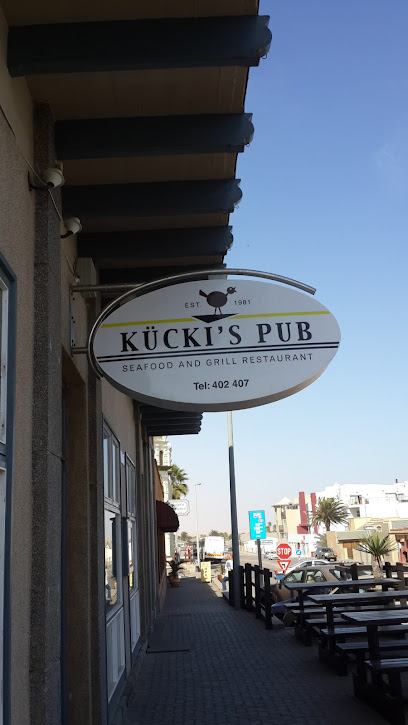
Goanikontes Restaurant
Discover Goanikontes Restaurant: A hidden gem in Namibia offering exquisite local cuisine amidst breathtaking desert landscapes.

Ocean Cellar
Discover exquisite seafood and breathtaking views at Ocean Cellar in Swakopmund - where local flavors meet oceanfront dining.

Farmhouse Deli
Discover culinary delights at Swakopmund's Farmhouse Deli - where local flavors meet stunning coastal views.

The Portuguese Fisherman Restaurant
Discover fresh seafood delights at The Portuguese Fisherman Restaurant in Luderitz - where every bite celebrates the ocean's bounty.

Fishy Corner Restaurant
Discover delectable seafood delights at Fishy Corner Restaurant in Hentiesbaai – where every meal is an oceanic adventure.

Old Sailor Swakopmund
Experience authentic Namibian seafood at Old Sailor Swakopmund—where coastal flavors meet warm hospitality.

Markets, malls and hidden boutiques
OASIS FOOD STALL cc
Experience the rich flavors of Namibian cuisine at Oasis Food Stall in Usakos, a must-visit destination for food enthusiasts.

Shell
Experience convenience and comfort at Shell Usakos, your essential pit stop for fuel and refreshments while exploring Namibia.

Engen Service Station
Discover convenience at Engen Service Station in Usakos, your reliable stop for fuel, snacks, and local takeaways on the road in Namibia.

OK Foods
Explore the vibrant flavors of Namibia at OK Foods in Usakos, your ultimate destination for fresh produce and local delicacies.

Usakos Bistro
Discover the flavors of Namibia at Usakos Bistro, where local ingredients meet international cuisine in a welcoming atmosphere.

Uiba Oas Crystals Market
Discover unique crystals and local crafts at Uiba Oas Crystals Market, a vibrant shopping destination in Namibia.

Big Brother Guesthouse
Discover the charm and comfort of Big Brother Guesthouse in Usakos, Namibia, your perfect base for exploring local culture and breathtaking landscapes.

PEP Usakos
Explore PEP Usakos for affordable family clothing, from stylish women's wear to trendy children's outfits in the heart of Usakos.

Lewis Usakos
Discover quality furniture and appliances at Lewis Usakos, where style meets affordability for your perfect home setup.

Northwest Service Station
Discover the Northwest Service Station in Usakos, a vital stop for quality fuel and fresh food on your journey through Namibia's stunning scenery.

Na JOU Smaak Koffie Huis
Experience the essence of Namibian coffee culture at Na JOU Smaak Koffie Huis in Usakos, where every cup tells a story.

Khan Diesel Repairs
Discover reliable auto repair services at Khan Diesel Repairs in Usakos, Namibia, ensuring your travels are smooth and trouble-free.

Muhau Apparel
Explore the vibrant world of fabrics and sewing at Muhau Apparel in Karibib, Namibia, a treasure trove for sewing enthusiasts and creative souls.

Printshop
Discover Usakos' creative side at the local printshop, your hub for unique prints and personalized service in the heart of Namibia.

Isa-Khoe Boutique
Discover stylish local fashion and unique pieces at Isa-Khoe Boutique in Usakos, showcasing the vibrant culture of Namibia.

Essential bars & hidden hideouts
Andy's Pub & Restaurant
Discover the vibrant flavors of Namibia at Andy's Pub & Restaurant, a cultural hotspot in Windhoek offering delicious local cuisine and a lively atmosphere.

Kücki's Pub
Experience the vibrant atmosphere of Kücki's Pub in Swakopmund, where delicious food, refreshing drinks, and local culture come together.
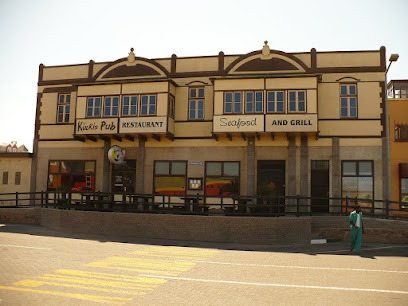
Skubbe Pub & Grill
Discover the lively Skubbe Pub & Grill in Hentiesbaai, where great food and a vibrant atmosphere await you at the heart of Namibia's coastal charm.
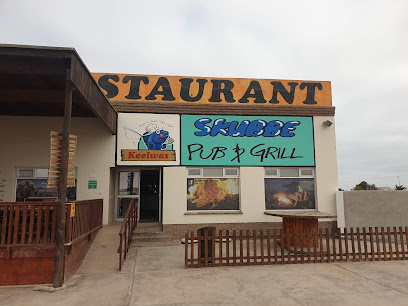
Bar Zonder Naam
Discover the charm of Bar Zonder Naam, a cozy wine bar in Swakopmund, offering an exquisite selection of wines and delightful small plates.

Soundgarden Swakopmund
Discover the vibrant Soundgarden Swakopmund, where refreshing drinks meet a lively atmosphere in the heart of Namibia's coastal gem.

AP Lounge
Experience the vibrant local culture at AP Lounge in Omaruru, where friendly vibes and a diverse drink menu await you.

OK Foods
Explore local flavors and essentials at OK Foods, your go-to supermarket in Usakos, Namibia for an authentic shopping experience.

ISSA Guest House
Discover comfort and local charm at ISSA Guest House, your ideal base for exploring the beauty of Usakos and Namibia.

Omaruru Take Away &Bar
Experience the vibrant culinary scene at Omaruru Take Away & Bar, where local flavors meet a welcoming atmosphere.

Usakos Bistro
Discover Usakos Bistro, where local flavors meet international cuisine in a warm and inviting setting perfect for all travelers.

Big Brother Guesthouse
Discover the charm of Usakos at Big Brother Guesthouse, a cozy bed and breakfast perfect for exploring Namibia's stunning landscapes.

La Cava Pub and Grill Beer garden
Discover the vibrant atmosphere and local flavors at La Cava Pub and Grill Beer Garden in Karibib, Namibia, where great food and drinks await.

Uitkyk Guest Farm Namibia
Experience the serene beauty of Namibia at Uitkyk Guest Farm, where comfort meets nature in a breathtaking setting.

Nubeb Self-Catering Accommodation
Discover the serene charm of Nubeb Self-Catering Accommodation in Kalk, Usakos, offering a cozy retreat with self-catering options and local allure.

Shilongo Bar-H Mall
Discover the flavors of Namibia at Shilongo Bar-H Mall in Arandis, featuring delectable grilled dishes and a vibrant atmosphere for every visitor.

Local Phrases
-
- HelloHallo
[haa-loh] - GoodbyeTotsiens
[to-si-ens] - YesJa
[yah] - NoNee
[nee] - Please/You're welcomeAsseblief
[ah-suh-bleef] - Thank youDankie
[dahn-kee] - Excuse me/SorryJammer
[yah-mer] - How are you?Hoe gaan dit met jou?
[hoh kahn dit met yoh] - Fine. And you?Goed. En jy?
[khoot. en yai] - Do you speak English?Praat jy Engels?
[praht yai eng-els] - I don't understandEk verstaan nie
[ek fehr-stahn nee]
- HelloHallo
-
- I'd like to see the menu, pleaseEk wil asseblief die spyskaart sien
[ek vil ah-suh-bleef dee spay-skart seen] - I don't eat meatEk eet nie vleis nie
[ek ate nee flays nee] - Cheers!Gesondheid!
[khuh-sund-hait] - I would like to pay, pleaseEk wil asseblief betaal
[ek vil ah-suh-bleef buh-tahl]
- I'd like to see the menu, pleaseEk wil asseblief die spyskaart sien
-
- Help!Help!
[help] - Go away!Gaan weg!
[kahn vekh] - Call the Police!Bel die Polisie!
[bel dee poh-lee-see] - Call a doctor!Bel 'n dokter!
[bel un dohk-tuh] - I'm lostEk is verdwaal
[ek is fehr-dwahl] - I'm illEk is siek
[ek is seek]
- Help!Help!
-
- I'd like to buy...Ek wil koop...
[ek vil kohp] - I'm just lookingEk kyk net
[ek kaihk neht] - How much is it?Hoeveel kos dit?
[ho-vayl kohs dit] - That's too expensiveDit is te duur
[deet is tuh doo-er] - Can you lower the price?Kan jy die prys laat sak?
[kahn yai dee prees laht sahk]
- I'd like to buy...Ek wil koop...
-
- What time is it?Hoe laat is dit?
[ho-lahht is dit] - It's one o'clockDit is een uur
[deet is ayn oor] - Half past (10)Half tien
[half teeyn] - MorningOggend
[oh-khent] - AfternoonMiddag
[mid-dahg] - EveningAand
[ahnt] - YesterdayGister
[kis-tehr] - TodayVandag
[fun-dahg] - TomorrowMôre
[muh-reh] - 1Een
[ayn] - 2Twee
[twee] - 3Drie
[dree] - 4Vier
[feer] - 5Vyf
[fayf] - 6Ses
[sehs] - 7Sewe
[seh-weh] - 8Agt
[ahgt] - 9Nege
[neh-ye] - 10Tien
[teeyn]
- What time is it?Hoe laat is dit?
-
- Where's a/the...?Waar is 'n/die...?
[vahr is un/dee] - What's the address?Wat is die adres?
[vaht is dee ah-drehs] - Can you show me (on the map)?Kan jy vir my wys (op die kaart)?
[kahn yai feer may vays (ohp dee kart)] - When's the next (bus)?Wanneer is die volgende (bus)?
[vahn-ehr is dee fuhl-gende (buhs)] - A ticket (to ....)'n Kaartjie (na ....)
[un kart-yeh (nah)]
- Where's a/the...?Waar is 'n/die...?
History of Usakos
-
Long before the modern establishment of Usakos, the area was inhabited by the indigenous Damara and Herero people. These communities lived harmoniously with the land, practicing traditional agriculture and cattle herding. Their rich cultural heritage and oral histories provide a glimpse into the ancient life of the region.
-
In the late 19th century, Usakos became a significant site during the German colonial period in Namibia. The town was established as a key railway hub in 1900, connecting the interior of Namibia to the coastal town of Swakopmund and further to the broader German South West Africa colony. The German influence is still evident in the architecture and layout of the town.
-
Usakos thrived as a railway town due to its strategic location on the railway line. The construction of the railway attracted a diverse workforce and contributed to the town’s growth and development. The railway station and workshops in Usakos became central to its economy, facilitating the transportation of goods and people across Namibia.
-
During World War I, Usakos saw significant changes as the South African forces took control of German South West Africa, including Usakos, in 1915. The town's railway infrastructure was repurposed to support the war efforts, further cementing its role as a logistical hub in the region.
-
Following Namibia's independence from South African rule in 1990, Usakos underwent a period of transition. Efforts were made to restore and preserve the historical sites while promoting economic development. The town's rich history became a focal point for cultural tourism, attracting visitors interested in its colonial past and indigenous heritage.
-
Today, Usakos is known for its cultural diversity and historical significance. The town hosts various cultural events and festivals that celebrate the heritage of its inhabitants. The local museums and historical landmarks offer insights into the town’s multifaceted past, making Usakos a unique destination for history enthusiasts.
Usakos Essentials
-
Usakos is located in the Erongo Region of Namibia, approximately 140 kilometers from Swakopmund and 210 kilometers from Windhoek. The nearest international airport is Hosea Kutako International Airport in Windhoek. From Windhoek, you can rent a car or take a shuttle service to Usakos. The drive typically takes around 2 to 3 hours by road. Alternatively, you can take a bus or a train from Windhoek to Usakos, both offering scenic routes through the Namibian landscape.
-
Usakos is a small town, and many of its attractions are within walking distance. For longer trips, local taxis are available and relatively inexpensive. Public buses operate within the town and connect to nearby villages. Renting a car can be a convenient option for exploring the surrounding areas at your own pace. Bicycle rentals are also available for a more eco-friendly way to get around.
-
The official currency in Namibia is the Namibian Dollar (NAD), which is pegged to the South African Rand (ZAR) and accepted interchangeably. Credit cards are accepted in some hotels, restaurants, and shops, but it is advisable to carry cash, especially in smaller establishments and rural areas. ATMs are available in Usakos, but it is wise to withdraw sufficient cash in Windhoek before traveling to ensure you have enough funds.
-
Usakos is generally a safe destination for tourists. However, like any travel destination, it is advisable to take standard precautions. Avoid walking alone at night in unfamiliar areas and keep an eye on your belongings in crowded places. While there are no specific high-crime areas targeting tourists, it is always best to stay vigilant and aware of your surroundings.
-
In case of emergency, dial 112 for immediate assistance in Namibia. The local police station and medical facilities are available in Usakos. It is recommended to have travel insurance that covers medical emergencies. For minor health issues, there are pharmacies in the town where you can purchase over-the-counter medications. The closest major hospital is in Swakopmund, about 140 kilometers away.
-
Fashion: Do dress modestly, especially when visiting religious sites. Avoid wearing excessively revealing clothing. Religion: Do respect local customs and traditions. Always remove your hat and sunglasses when entering churches. Public Transport: Do be respectful and give up your seat to elderly passengers. Don't eat or drink on public transport. Greetings: Do greet people with a handshake. A friendly 'hello' or 'guten tag' (German influence) is appreciated. Eating & Drinking: Do try local delicacies and accept food offerings graciously. Don't refuse hospitality, as it is considered impolite.
-
To experience Usakos like a local, visit the local markets where you can buy fresh produce and traditional Namibian goods. Engage with locals, as they are often friendly and willing to share stories about the town's history and culture. Don't miss visiting the Usakos Railway Station, a historical site dating back to the colonial era. For a unique experience, take a walk through the nearby Spitzkoppe, known as the 'Matterhorn of Namibia,' offering breathtaking views and rock formations.
Trending Landmark in Usakos
-
Deadvlei
-
National Marine Aquarium
-
Okaukuejo Etosha
-
Petrified Forest
-
Ai Aiba - The Rock Painting Lodge
-
Skeleton Coast National Park
-
Duwisib Castle
-
Erongo Rocks - Farmhouse & Camping
-
Kudu Statue
-
Etusis Lodge
-
San Living Museum
-
Spreetshoogte Pass
-
Erongo Mountain Winery
-
Eco-Gliding Tours
-
Tikoloshe Afrika
Nearby Cities to Usakos
-
Things To Do in Karibib
-
Things To Do in Omaruru
-
Things To Do in Swakopmund
-
Things To Do in Okahandja
-
Things To Do in Walvis Bay
-
Things To Do in Windhoek
-
Things To Do in Otjiwarongo
-
Things To Do in Outjo
-
Things To Do in Etosha Village
-
Things To Do in Mariental
-
Things To Do in Tsumeb
-
Things To Do in Oshakati
-
Things To Do in Ongwediva
-
Things To Do in Lüderitz
-
Things To Do in Keetmanshoop








